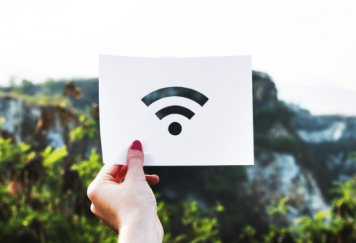The Covid-19 pandemic has had an unprecedented impact on every aspect of our lives, whether it is employment, education, shopping, entertainment, or socialization. Remote working, in particular, has been widely implemented in response to government guidance on social distancing regulations. Whilst this was probably introduced as a temporary measure at first, it’s become obvious that remote working at scale is completely achievable for the long-term as well. As a matter of fact, studies have found that remote working isn’t only desirable for employees, but that some employees are actually willing to resign from their jobs if remote working was no longer available to them.
Companies, employers, and employees across the globe have realized that it is time for a fundamental change in the way in which people work. Many have found that since remote working has been introduced, turnover has been reduced, organizational costs are lowered, productivity levels are higher and employees are able to achieve a better work-life balance. Clearly, there are benefits to adopting a work-from-home structure on a long-term basis, especially when it comes to overall satisfaction, performance, and well-being.
Following are some useful tips and tricks on how to work from home effectively, efficiently, and productively.
#1 Write Down Your Goals For The Day
Without supervision, it can be easy to lose attention and begin procrastinating. Writing down your goals for the day is an excellent way to remain focused and organized. Start your day as you would if you had to commute to an office, for example by eating breakfast and then getting dressed. When you start working, try to avoid any distractions or interruptions and commit your undivided attention to whatever tasks you have to complete. It’s important your expectations are realistic and achievable so that you can accomplish everything on a daily basis without causing yourself exhaustion or stress. Make sure that you know when to take breaks and step away from your desk at the end of the workday as well so that you can avoid burnout and establish healthy work-life boundaries.
#2 Always Set Up A Designated Workspace
The importance of creating a dedicated office space cannot be emphasized enough. Whether it is an entire room, or a corner in your bedroom or lounge, setting up a designated workspace has a myriad of advantages. First and foremost, you’ll be able to keep everything you need for a normal working day in a single place, such as electronic devices, documents, and stationery. What’s more, you’ll be able to focus on your tasks without any distractions or interruptions. With remote working, it can be hard to separate your work activities from your personal routine, and dedicated office space should enable you to still maintain a positive work-life balance without blurring or losing any boundaries.
#3 Invest In Good Office Furniture
The average workday is approximately eight hours long, which means that we’re stationary for at least forty hours a week. When you’re sitting in one place for such a prolonged period of time, it’s essential that you have furniture which can support your body and maintain your posture. At the end of the day, quality office furniture can mean the difference between a healthy, enjoyable, and productive work-from-home experience or a variety of painful health problems such as eye strain, shoulder and back issues, repetitive strain injuries, and fatigue. For the long-term, it is recommended that you invest in modern ergonomic furniture such as desks and chairs, which have been engineered and designed especially to reduce human error, increase productivity, and enhance safety and comfort.
#4 Upgrade Your Tech
Technology is the basis of remote working. Working from home would simply be impossible in a world without electronic devices and instant communication networks, and this is why it is critical that you have the right tech to support you. Outdated and faulty tech can prevent you from working productively, impact communication with your colleagues and dampen your overall work-from-home experience. With upgraded tech, you’ll find that your day goes by so much more smoothly and seamlessly because no one should have to deal with tech troubles whilst they’re trying to work. The most important pieces of tech you should have on hand include headphones, microphones, cameras, PCs, laptops, and monitors.
#5 Consider Multiple Monitors
Returning to the subject of monitors, it’s definitely worthwhile to consider multiple monitors. For many of us who are working from home, one screen simply isn’t enough to be able to work comfortably. We usually have to allocate one monitor to video calls, online meetings, or general communications with our colleagues, whilst we need another monitor to actually do our work. One solution is to purchase a second monitor, laptop, or perhaps even a tablet, but then there’s the issue of them cluttering up our workspaces. One interesting alternative is a portable monitor, like the Duex Plus from Mobile Pixels. This monitor can be attached to your PC, laptop, or electronic device, and it is ideal for employees who want to effectively manage their workloads, multitask with ease, and keep their desks as organized as possible.
Transitioning To Work-From-Home
Companies, employers, and employees alike are beginning to realize that remote working could be their reality for the foreseeable future. For many of us, it has been a productive, meaningful, and enjoyable experience. The Covid-19 pandemic has proven that it is sustainable on a long-term basis as well, and many influential businesses and industry leaders believe that work-from-home arrangements have become a viable model for employment.
It wouldn’t be an exaggeration to say that remote working has become a lot more than a social distancing measure to tackle the Covid-19 pandemic. It’s become a part of the way in which many of us not only currently work but expect to work in the future as well. It makes sense, therefore, to seriously think about your work-from-home arrangements with regards to their long-term sustainability and practicality, in preparation for the seismic shifts which are to come in the way we work.
Follow TechStrange for more Technology, Business, and Digital Marketing News.





